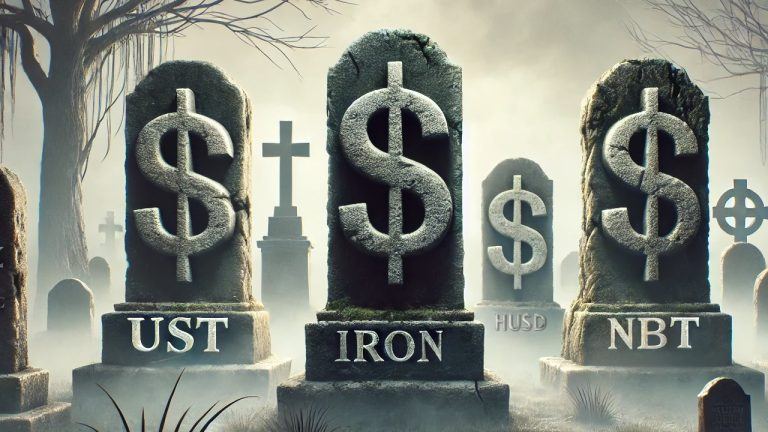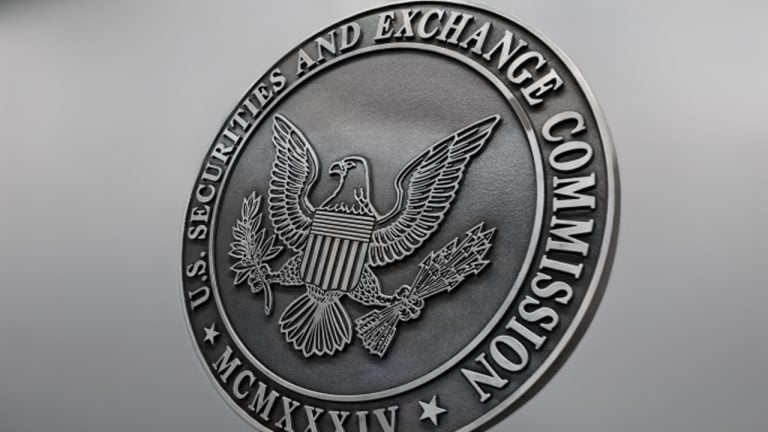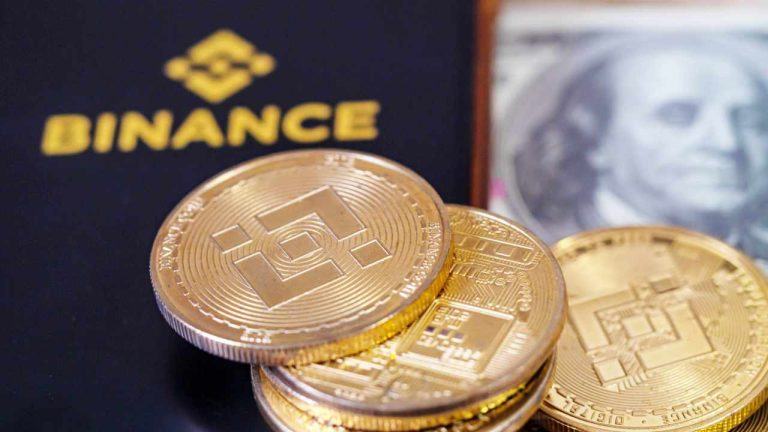 Stablecoins, the cryptocurrencies pegged to fiat currencies like the U.S. dollar to keep their value steady, can still face failures. Several well-known examples demonstrate that maintaining stability is more challenging than it appears. So, how does something designed to be ‘stable’ unravel? A Historical Review of Stablecoin De-Pegging Incidents There’s no doubt that these stablecoins […]
Stablecoins, the cryptocurrencies pegged to fiat currencies like the U.S. dollar to keep their value steady, can still face failures. Several well-known examples demonstrate that maintaining stability is more challenging than it appears. So, how does something designed to be ‘stable’ unravel? A Historical Review of Stablecoin De-Pegging Incidents There’s no doubt that these stablecoins […]
The U.S. Securities and Exchange Commission (SEC) is abandoning its probe into the stablecoin-issuer Paxos, according to multiple reports. Per Fortune, the SEC’s decision to no longer pursue Paxos over its BUSD stablecoin signals a win for the crypto industry, indicating that the regulator is no longer considering stablecoins as securities. According to an announcement […]
The post SEC Drops Investigation Into Paxos, Decides BUSD Stablecoin Not a Security: Report appeared first on The Daily Hodl.
 The Securities and Exchange Commission (SEC) has decided to end its investigation into Paxos, a New York-based issuer of stablecoins, suggesting that stablecoins may not be treated as securities in most cases. This decision comes more than a year after the SEC sent Paxos a Wells Notice concerning the BUSD stablecoin, which is backed by […]
The Securities and Exchange Commission (SEC) has decided to end its investigation into Paxos, a New York-based issuer of stablecoins, suggesting that stablecoins may not be treated as securities in most cases. This decision comes more than a year after the SEC sent Paxos a Wells Notice concerning the BUSD stablecoin, which is backed by […]The SEC's decision may set a precedent, potentially easing regulatory pressures on stablecoins and influencing future crypto asset regulations.
The post SEC quietly closes investigation into Paxos – no securities charges against BUSD appeared first on Crypto Briefing.
 The U.S. District Court for the District of Columbia has dismissed several claims in the U.S. Securities and Exchange Commission (SEC)’s case against Binance and its affiliates. This includes allegations related to secondary BNB sales and the sale of the stablecoin BUSD. However, the majority of the claims against the crypto exchange will proceed. Some […]
The U.S. District Court for the District of Columbia has dismissed several claims in the U.S. Securities and Exchange Commission (SEC)’s case against Binance and its affiliates. This includes allegations related to secondary BNB sales and the sale of the stablecoin BUSD. However, the majority of the claims against the crypto exchange will proceed. Some […]
The SEC derided Binance’s request to have the regulator’s suit thrown out, claiming the crypto exchange hasn’t correctly applied the law.
Binance’s arguments used in its motion to dismiss a lawsuit from the United States securities regulator relies on an incorrect legal analysis and have no basis in law, the regulator has argued.
In a Nov. 7 court filing the SEC rebuffed Binance’s earlier bid to toss the regulator’s suit saying no court has adopted Binance’s “tortured interpretation of the law.”
The SEC sued Binance in June alleging it, Binance.US and its founder Changpeng “CZ” Zhao sold unregistered securities and failed to register as an exchange in the United States.
Binance argued the SEC failed to introduce crypto guidelines, misinterpreted securities laws and applied them to crypto and called the suit an overstep of its authority.
In its latest rebuttal, the SEC claimed Binance “never complied” with federal securities laws which was “a deliberate choice.”
“Binance’s Chief Compliance Officer crudely but succinctly summed up this case when he admitted that Binance was ‘operating as a fking unlicensed securities exchange in the USA bro.’ He was right.”
It added Binance’s arguments that compared crypto to “supermarket items like oranges [...] are absurd” and claimed the crypto exchange’s crypto sales are investment contracts under the Howey test.
Related: SEC Inspector General says prohibition on crypto ownership hinders agency hiring
The regulator reiterated its claims the BNB (BNB) initial coin offering violated securities laws and Binance USD (BUSD) along with the yield-bearing staking, Vault and Earn programs are investment contracts.

It also rebuffed Binance’s argument that the suit violated the major questions doctrine — a 2022 U.S. Supreme Court ruling saying Congress doesn’t delegate authority to agencies, which other crypto firms have cited in their aim to push back on the SEC’s claimed authority.
The SEC claimed granting Binance’s dismissal request would “dismantle decades of foundational precedent upon which the nation’s securities laws operate” and in its place would be a “rigid framework” that upends the “broad, flexible regime” of the current laws.
Magazine: The truth behind Cuba’s Bitcoin revolution — An on-the-ground report

The move is part of a phased termination of BUSD support by February 2024.
Crypto exchange Binance will cease borrowing and lending services for its native stablecoin Binance USD (BUSD) by October 25.
According to the October 3 announcement, the exchange will close all outstanding BUSD loan and collateral positions by the end of the month. Users would still be able to borrow and lend on Binance using stablecoins such as Tether (USDT), Dai, TrueUSD (TUSD), and USD Coin (USDC). Currently, users can lend their BUSD on Binance at an estimated annual percentage yield of 3%.
On August 31, Cointelegraph reported that Binance will cease all services related to its BUSD stablecoin by 2024. Previously, on February 13, New York fintech firm Paxos, the issuer of the BUSD stablecoin, said it would end relations with Binance due to the latter's ongoing litigation with the U.S. Securities and Exchange Commission. Paxos said it would end redemptions from BUSD to underlying U.S. cash and Treasuries in February 2024, with new minting of BUSD halted for the time being.
Before the termination announcement, BUSD was one of the largest stablecoins, reaching a peak market capitalization of $23 billion in November 2022. It has since fallen to $2.23 billion at the time of publication.
The termination of BUSD and related services has occurred in phases. Last month, the exchange suspended BUSD withdrawals via BNB Chain, Avalanche, Polygon, Tron and Optimism but left them open on the Ethereum network. BUSD deposits, on the other hand, remain open across all blockchains, with the exchange urging users to convert their BUSD balances into fiat or other crypto by next year.
FYI: Binance will stop BUSD in 2024
— Nu Brave (@NuBraveIN) August 30, 2023
According to an official announcement on crypto exchange Binance’s app, the exchange pops up a notification for users that they will stop supporting BUSD in 2024.
This is an elignment with Paxos phase out for purchasing BUSD by February… pic.twitter.com/XiRPy71b3p
Magazine: Blockchain detectives: Mt. Gox collapse saw birth of Chainalysis

Stablecoins from Circle and MakerDAO have been more unstable than those from Tether and Binance over the past couple of years, according to a new report from S&P Global.
Dollar-pegged stablecoins are not immune to dropping their pegs, but some such as Circle’s USD Coin (USDC) and MakerDAO’s Dai (DAI), have been more prone to depegging than others, according to analysts at S&P Global.
A September research paper from Dr. Cristina Polizu, Anoop Garg and Miguel de la Mata, delved into stablecoin valuation and depegging for five leading stablecoins: Tether (USDT), Binance USD (BUSD), Paxos (USDP), USDC and DAI.
The analysis revealed that USDC and DAI have spent more time below a dollar than USDT and BUSD over the past two years. In the longest and deepest de-peg event, USDC was below $0.90 for 23 minutes and DAI for 20 minutes.
However, USDT dipped below $0.95 for only one minute, while the price for BUSD did not drop below $0.975 at all between June 2021 and June 2023.

Moreover, the frequencies of de-pegging were far higher for USDC and DAI than USDT and BUSD over the two-year period.
The researchers noted that one-minute de-peg events “can be attributed to noise,” especially for thresholds closer to $1. Longer de-peg events were considered “more meaningful” but the results still favored USDT over USDC.

USDC dropped to $0.87 in March 2023 in connection with the Silicon Valley Bank collapse. USDC issuer Circle had $3.3 billion of its $40 billion USDC reserves at the time with SVB.
MakerDAO was one of the largest holders of the stablecoin at the time, with over 3.1 billion USDC in reserves collateralizing DAI which also de-pegged.
“Maintaining the peg and a stabilization mechanism requires good governance, adequate collateral and reserves alongside liquidity, market confidence and adoption,” Dr. Polizu and colleagues concluded.
Related: PayPal’s stablecoin opens door for crypto adoption in traditional finance
Tether has been plagued with mainstream media FUD for years, yet the findings suggest USDT has been more stable than its rival USDC over the same period.
Moreover, the supply of USDT has increased by 25% since the beginning of the year to 83 billion, giving it a commanding stablecoin market share of 67%. This has largely been at the expense of Circle, which has seen USDC supply shrink by 41.5% and market share fall to 21% over the same period.
Magazine: Magazine: Recursive inscriptions — Bitcoin ‘supercomputer’ and BTC DeFi coming soon

Paxos has earlier said it will halt support of Binance's stablecoin by February 2024, now the exchange has said it will also stop support by that time.
Crypto exchange Binance has encouraged users to start converting their Binance USD (BUSD) stablecoin holdings into a newly listed stablecoin amid plans to wind down support for BUSD.
In an Aug. 31 statement from Binance, the crypto exchange confirmed prior speculation that it will gradually stop support for BUSD by February 2024 — a decision in line with Paxos' plans to end BUSD redemption at that time.
The official statement is the first time Binance has addressed the subject after several users shared screenshots of a pop-up on their mobile app about the planned support halt.
FYI: Binance will stop BUSD in 2024
— Nu Brave (@NuBraveIN) August 30, 2023
According to an official announcement on crypto exchange Binance’s app, the exchange pops up a notification for users that they will stop supporting BUSD in 2024.
This is an elignment with Paxos phase out for purchasing BUSD by February… pic.twitter.com/XiRPy71b3p
In its statement, Binance said it is encouraging users to trade or convert their BUSD balances for First Digital USD (FDUSD) — a stablecoin launched in June by the Hong Kong-based trust company First Digital Group which had its debut listing on Binance in late July.
The exchange added BUSD to FDUSD trades and conversions are fee-free, and on Aug. 30 delisted eight BUSD pairs. The exchange has previously incentivized users to use the stablecoin with zero-fee trading pairs for FDUSD with Bitcoin (BTC) and Ether (ETH).
Related: Binance sold USDC for another stablecoin — Coinbase CEO
Binance's decision to halt BUSD support appears to follow the United States Securities and Exchange Commission on Feb. 13 alleged BUSD was an unregistered security in a wells notice it issued to Paxos.
The same day, the New York Department of Financial Services ordered Paxos to halt the issuance of BUSD.
Magazine: Unstablecoins: Depegging, bank runs and other risks loom

Proponents say PayPal’s PYUSD could see Ethereum become the money layer of the internet, while opponents argue that it’ll act like a poorly designed CBDC.
Paypal’s new Ethereum-based stablecoin, PYUSD has been seen as bittersweet news for the crypto community.
While it could finally see Ethereum find its place in mainstream adoption, it could also spell trouble for decentralization and personal control of assets, warns the community.
The new stablecoin, Paypal USD, was launched on Aug. 7 and is issued by Paxos Trust Co. — the firm behind Binance USD (BUSD). It’s built on Ethereum and “designed for digital payments and Web3,” with the firm saying it will soon be available to United States customers.
The launch has been seen as a boon for Ethereum adoption. Ethereum bulls Anthony Sassano and Ryan Sean Adams believe the ERC-20 stablecoin will push the blockchain closer towards becoming the money layer of the internet.
This is the Ethereum contract address for PayPal's stablecoin.
— RYAN SΞAN ADAMS - rsa.eth (@RyanSAdams) August 7, 2023
I can't believe i get to tweet that.
We've come so far. pic.twitter.com/S6kSqcV4ut
The number of daily active users on Ethereum currently hovers between 300,000-400,000, according to Etherscan.
However, Sean Adams noted that 430 million accounts actively use the online payment processor, which means that over 5% of the world’s 8 billion people could theoretically be onboarded onto Ethereum through PayPal’s new stablecoin.
Martin Koppelmann, the CEO and co-founder of Gnosis, added that by launching PYUSD on Ethereum’s base layer, Ethereum layer-2s will be able to interact with PYUSD too.
Others, including lawmakers, have seen it as another example of larger institutions embracing crypto, breathing new life into the traditional payments system.
In an Aug. 7 statement, Patrick McHenry, Chair of the United States House Committee on Financial Services said stablecoins like PayPal’s PYUSD “hold promise as a pillar of our 21st century payments system.”
#NEW: Chairman @PatrickMcHenry releases a statement following the announcement of PayPal's payment stablecoin launch.
— Financial Services GOP (@FinancialCmte) August 7, 2023
Read more https://t.co/LOF9ayUNnG pic.twitter.com/sRfSfLYbXQ
However, not everyone is convinced about PayPal’s new stablecoin.
Several smart contract auditors highlighted that PYUSD’s smart contract contains a 'freezefunds' and 'wipefrozenfunds' function which they claim is a textbook example of a centralization attack vector in Solidity contracts.
The new Paypal USD stablecoin has an "assetProtection" role which can wipe your balance in two transactions (first `freeze`, then `wipeFrozenAddress`)
— pashov (@pashovkrum) August 7, 2023
In smart contract security we call this a "centralisation attack vector" pic.twitter.com/RsmqvsnKvi
This concern was echoed by cryptocurrency researcher Chris Blec, who believes that PayPal will use the controversial functions where necessary.
Digital asset lawyer Sarah Hodder believes many characteristics of PayPal’s stablecoin resemble that of a censorship-enabled central bank digital currency. Another smart contract auditor noted that PYUSD’s smart contract can be changed by PayPal at any time.
I just read the PayPal USD terms of service.
— Sasha Hodder (@sashahodler) August 7, 2023
- full KYC
- custody by Paxos
- tied to your PayPal login
- PayPal can reverse any transaction
- claimed to be fully backed by actual USD
All the censorship capabilities of a CBDC, but launched by big tech instead of the gov't.
In October, PayPal was slammed for a controversial policy that could’ve seen users fined $2,500 for spreading “misinformation.” The firm later backpedalled, claiming the policy update was published “in error.”
Related: PayPal’s crypto holdings increased by 56% in Q1 2023 to nearly $1B
Meanwhile, Blockchain engineer Patrick Collins took a slightly more neutral view, suggesting that PayPal’s PYUSD could have been “epic” but believes some of the engineering choices were suboptimal — such as choosing an outdated version of Solidity to program the contract, making the contract upgradeable and not making it gas efficient.
Sassano also explained in a separate post that while PayPal's stablecoin is centralized, Ethereum users are free to choose whether they wish to use it or not.
Yes, PayPal's stablecoin is centralized.
— sassal.eth (@sassal0x) August 8, 2023
No, that doesn't make it any less cool that PayPal has a stablecoin.
Ethereum being a settlement layer for all types of value means that different types of assets will exist on the network & you get to choose which ones you want to use.
PayPal said PYUSD will be rolled out within the next few weeks.
ETH is currently priced at $1,825 which is approximately the same price at the time of PayPal’s announcement about 10 hours ago, according to CoinGecko. Only minor fluctuations have been observed in ETH’s price since then.
Magazine: DeFi Dad, Hall of Flame: Ethereum is ‘woefully undervalued’ but growing more powerful